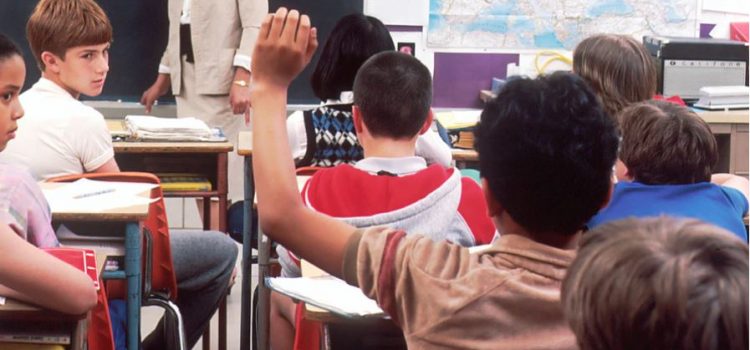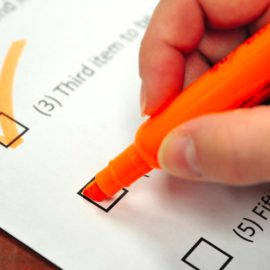

This article is an excerpt from the Shortform book guide to "Range" by David J. Epstein. Shortform has the world's best summaries and analyses of books you should be reading.
Like this article? Sign up for a free trial here .
Are “how” or “why” questions more valuable? Which one is more often used in the education system?
Although asking both “how” and “why” questions is necessary, “why” questions are more important because they get the recipient thinking. “Why” questions are slow and difficult and increase one’s critical thinking skills. Sadly, they’re not asked enough in schools.
Here’s why “why” questions are such valuable learning tools.
“How” Questions Versus “Why” Questions
Epstein distinguishes between two types of problems given to students in educational settings—what psychologists have termed “using procedures” questions and “making connections” questions. We can more simply describe them as “How” and “Why” questions.
For How Questions, students are asked to carry out specific instructions—for example, reducing a fraction to its simplest form—while for Why Questions, students are asked to analyze a situation and determine for themselves what procedures they need to use—for example, calculating how much money to tip at a restaurant.
Epstein notes that to solve How Questions, students just need to memorize how to do something—tactics which are best learned through repeated practice. To solve Why Questions, however, students need to understand why specific procedures are helpful in a broader context that more closely approximates the real world—they need strategies that require generalist understanding.
Both types of questions are necessary for effective learning. You need to know the rules of basic math in order to calculate a tip at a restaurant. However, because they’re slow and difficult, Why questions are drastically underrepresented in most schools, leaving students unable to use what they’re learning in real life.
Epstein bases his argument on a study that filmed and analyzed hundreds of elementary school math classes from a wide range of countries around the world. He emphasizes one recurring mistake made in many countries. Even though Why Questions were included in the curriculum to force students to think conceptually, teachers who were unable to quickly or easily teach students these difficult concepts would instead give hints until Why Questions were stripped down into How Questions. Students would guess at which procedure to use until they got it right, and the teacher would move on without ever establishing a deeper level of understanding.
For example, imagine if a teacher asked the students to write a mathematical expression to describe the area of one slice of a pizza divided into fourths. The teacher tells the class to use “a” to represent the pizza’s area, hinting to the class that they need to use “a” somehow. The students guess “4/a” and “4a” before landing on the correct answer of “a/4” without ever considering why.
In the United States, around one out of every five math problems began as a Why Question, but by the time the class solved it, zero percent of them remained Why Questions.
Japan, on the other hand, was the most successful country at teaching Why Questions. Epstein recounts how students in Japanese classrooms sometimes spent entire periods solving a single problem, trying out different conceptual strategies and learning why procedures worked the way they did. Japan’s schools were successful because they embraced the need for education to be slow and difficult.
| Education Around the World As Epstein’s study shows, education differs widely in countries around the world. As Epstein describes, a Japanese child’s education is uniquely rigorous from the very beginning. Kindergarteners have to study in order to pass elementary school entrance exams and often attend after-school tutoring to ace them. University entrance exams are life-and-death in such a work-obsessed industrial culture, and many high school students spend late nights at “cram schools.” 44% of these high schoolers fail their first attempt at university exams and become ronin, “samurai without a master,” studying on their own for a year before trying again. This rigorous education system has been a mixed bag for Japan. After World War II, Japan implemented its highly competitive mandatory testing to prepare its students for the workforce, skyrocketing the nation to become the second-largest economy in the world. However, Japanese growth ground to a halt in the 90s, provoking reform in Japanese schools, including a reduction in Saturday classes. Some attribute Japanese stagnation to the school system’s de-emphasis of valuable creative and critical thinking skills in favor of specialized exam prep. Others argue that the work-obsessed culture has pushed the Japanese people to their limits, leading to unproductive and unfulfilling social isolation. Still, they consistently rank among the top nations of the world in reading literacy, math, and science. On the opposite end of the spectrum, Finland imposes far less academic rigor on its youngest students, yet they too rank among the highest scorers worldwide. For every hour of class, students get a fifteen-minute recess to play outside. They don’t start formally learning math or reading and writing until they’re seven years old. Instead, young children focus on developing social skills and “play-based learning”—teachers direct their students’ play with the deliberate intent of cultivating focus and problem-solving. For example, one assignment given to a class of first-graders was to go outside, collect fifty rocks and acorns, and organize them in groups of ten. Most importantly, Finnish teachers try to give students the “joy of learning” and help them learn to motivate themselves. Classes are small enough for teachers to form deep connections with their students. When a student falls behind, teachers consult one another to come up with the best way to catch them up. Nearly 30% of students in Finland receive some kind of individual help in grade school. The Finnish mandate just one standardized test to high school seniors, and don’t ascribe much value to it. They don’t assign much homework, either. It’s a counterintuitive success story that shows there’s more than one way to teach deep understanding. |
Why Questions for Adults
This problem doesn’t just exist at the elementary level. Epstein cites a study that observed undergraduate-level calculus classes at the Air Force Academy. Over the course of a decade, researchers studied the performance of more than ten thousand students and a hundred different professors, who all taught the exact same curriculum.
Some professors posed more Why Questions and emphasized broad, interdisciplinary understanding, while others emphasized efficient mastery of specific procedures that would be on the test. At first, it looked like the deep learning prompted by Why Questions was unnecessary. The professors who didn’t bother to teach Why Questions yielded students with higher test scores and earned more positive student evaluations than the professors who emphasized general knowledge.
However, once the students advanced to Calculus II and more complex math classes, students of deep learning vastly outperformed their procedurally-minded peers. Epstein uses this to argue that Why Questions requiring deeper understanding result in more robust, practical knowledge over the long term, but far too often, they’re downplayed in the name of specialized efficiency.
| Educational Peers at the Air Force Academy The difference in teaching styles isn’t the only significant factor influencing students’ performance at the Air Force Academy. One study found a strong correlation between a freshman’s GPA and the average SAT scores of the other members in their squadron, indicating that spending time with studious peers has a significant influence on academic performance. However, when some squadrons were specifically assembled to match together low performers and high performers, the low performers actually performed worse than low performers in fully random squadrons. Researchers concluded that the gulf between the high and low performers was so great that the two groups didn’t want to mix, resulting in separate cliques within a single squadron. This indicates that attempts to “inspire” low performers in schools by manipulating their peer groups could easily backfire. |

———End of Preview———
Like what you just read? Read the rest of the world's best book summary and analysis of David J. Epstein's "Range" at Shortform .
Here's what you'll find in our full Range summary :
- Why it's better to be proficient in a range of skills rather than becoming a specialist in one
- Why you're never “too late” to pursue something you’re interested in
- Why the nontraditional background of a generalist gives them an edge






